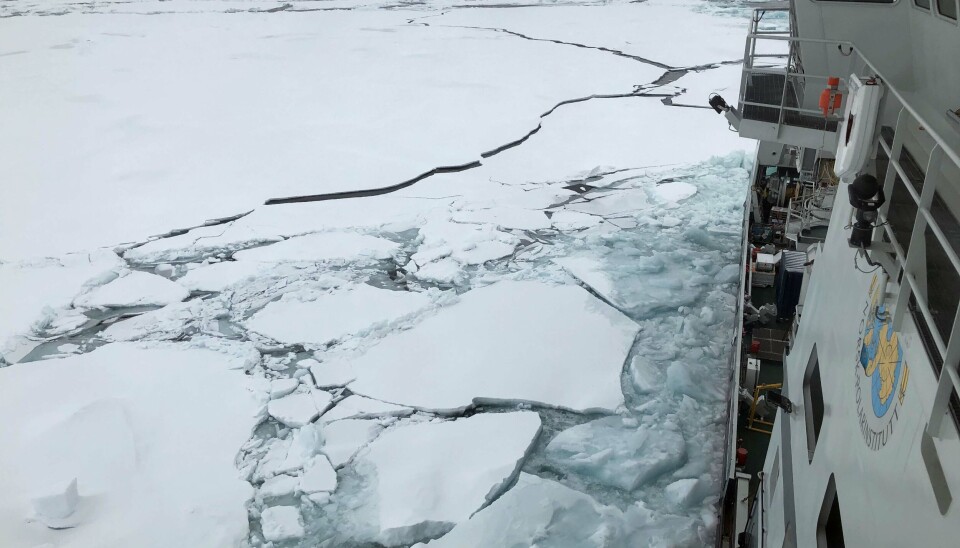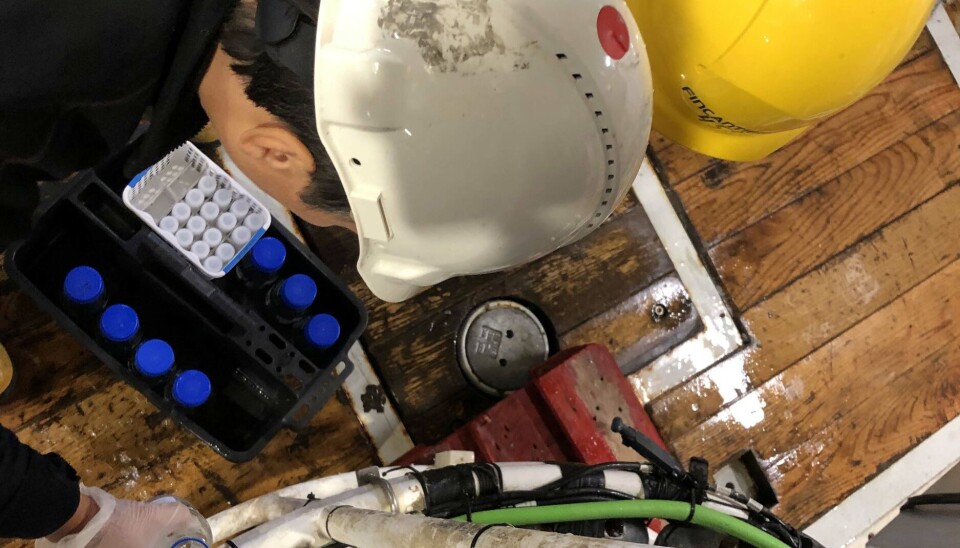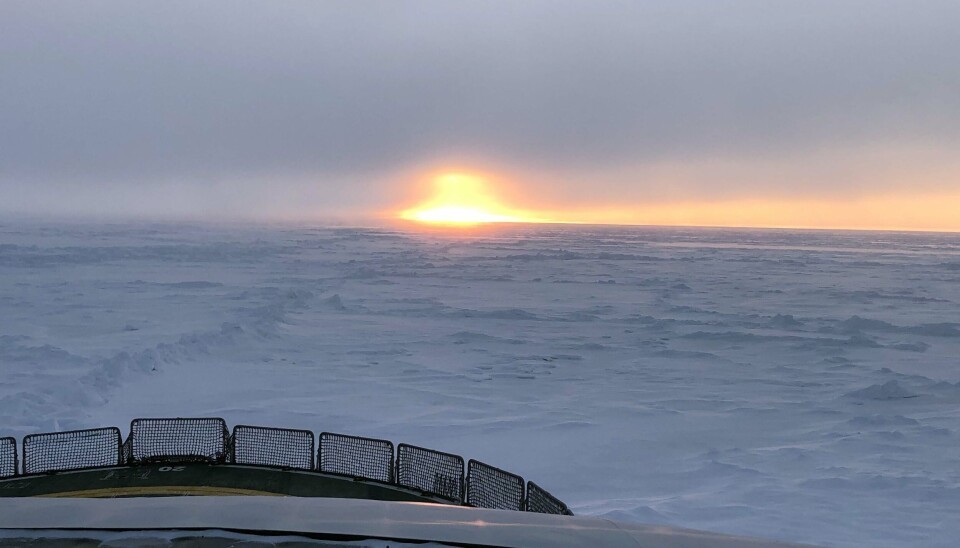
The Transpolar Drift current
The largest Arctic river - transports materials into the central Arctic Ocean from Siberian Shelf across the North Pole
We passed latitude 87°N in the central Arctic Ocean onboard the RV Kronprins Haakon, not far from the Lomonosov Ridge and only 300 km from the North Pole, hoping to find traces of Siberian Shelf and river water in the Transpolar Drift current. We are sailing against the current, going northward from the Nansen Basin, north of Svalbard into the Amundsen Basin in the search for this specific water or sea ice transported in this current.

The Transpolar Drift (TPD) is a surface current that crosses the North Pole and central Arctic Ocean from Siberia to ends up in the Arctic outflow in the East Greenland Current in the western Fram Strait. It was this current that Nansen himself used to traverse across the Arctic Ocean with Fram frozen into the ice, and Nansen in fact showed that this current existed. It is like a large river that carriers surface waters and sea ice with larger concentrations of greenhouse gases such as carbon dioxide (CO2) and methane, and trace metals, organic carbon, sediments, and organisms, originating from land, rivers, coastal erosion and melting permafrost all the way from Siberia. Sea ice is formed on the shallow shelves, where it can incorporate sediments, carbon and organisms when formed. The trapped inorganic and organic carbon in the ice and water are further transported in the TPD, to later end up in the Fram Strait Arctic outflow water where it melts on the western side near the North-East Greenland, releasing carbon accumulated on the shallow Siberian shelves. Parts of the carbon are conveyed into this surface current which finally ends up further south in the North Atlantic, influencing the world oceans.

The presence of the TPD in surface waters can be traced using chemical tracers, such as colored dissolved organic carbon (CDOM), salinity, oxygen stable isotopic ratio, nutrients, inorganic carbon, and ocean acidification state which is a measure of ocean acidity; described commonly by pH, CO2, alkalinity (basicity), and calcium carbonate saturation state. We expect higher CDOM signals of terrestrial organic matter derived from river input when reaching the TPD in the Amundsen Basin than in the Nansen Basin, with lower pH, higher CO2, fresher water, and effects on the alkalinity. Indications from previous observations in the Fram Strait time series on inorganic carbon show that pH and calcium carbonate saturation are decreasing and CO2 increasing, with fresher water in the top 50 meters. This is a large contrast to the salty Atlantic waters that enter the Arctic Ocean in Nansen Basin.
We are eager finding the TPD water going north. Passing the Gakkel Ridge at 85°N, 07°E, there were no signs of the Siberian shelf water in the CDOM signal. Entering the deep Amundsen Basin, slightly elevated CDOM and CO2 signals were observed, which was intensified moving further northwest. Finally, in the Amundsen Basin clear indications of chemical tracers of TPD water were found, with the origin from Siberia.

In the Nansen Legacy project (Arven etter Nansen), we trace the chemical components to find out where is the TPD located and how much of this water and sea ice are transported in this current and observed downstream in the Arctic outflow water in the Fram Strait.
There was a green moss found in one of the sediment samples picked up from the sea floor at 4000m depth in the Amundsen Basin.
We wonder if this green moss is coming from the Siberian tundra, flushed out with a river to the ocean shelf, incorporated into sea ice or transported with sinking surface water to the bottom, and then later picked up by the box corer by scientists onboard RV Kronprins Haakon, during the Arctic Basin cruise in 2021?
Follow our journey!







